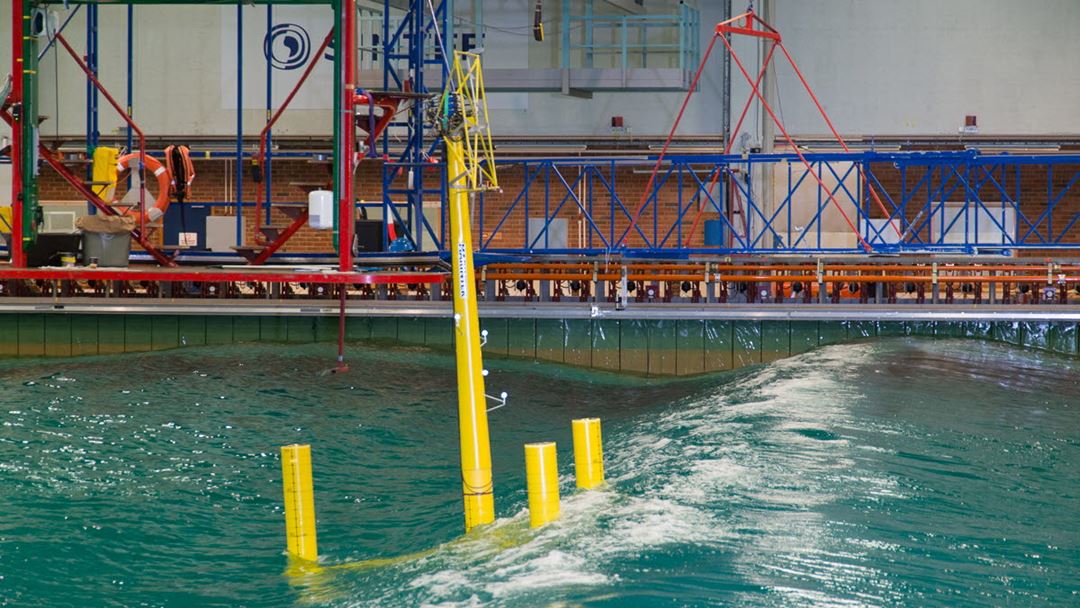A series of model tests of a floating wind-turbine using a completely new method has recently been carried out in MARINTEK's ocean laboratory.

“Setting up the complete system was a major challenge, not least in getting it to work properly. But we managed it at last, and the model tests went extremely well. It was exciting to test the system to its limits and to see how heavy winds and waves we could subject the model to. We have now performed tests that no-one else has ever carried out, and we are proud of that,” says MARINTEK project manager Maxime Thys.
Powerful waves
The model was subjected to powerful actual waves and to winds of up to 25 metres per second using real-time simulators, a method known as hybrid testing. The research formed part of the activity of the FME NOWITECH (Norwegian Research Centre for Offshore Wind Technology), which is financed by the Research Council of Norway, industrial partners and research institutions.
“The greatest challenge was to find out how we ought to model the wind in order to perform the model tests. We decided not to use a wind-tunnel, but to use computer simulations instead. The programme simulates winds that are then loaded onto the wind-turbine via a system of motors and lines. So the waves were real, while the winds were simulated, and the systems communicated with each other in real time,” explains the MARINTEK research scientist.
Too expensive to be commercialised
“I think it is very exciting that progress is still being made in how we test things. Wind turbines are subjected to a very complex set of loads, which means that tests can be both complicated and expensive. It will be excellent if we can simplify them with the aid of hybrid systems like this,” says Trond Landbø, head of renewable energy systems at engineering and construction consultants Dr.techn.Olav Olsen.
NTNU students and representatives of industry came to MARINTEK to observe the model tests, which could help to make ocean energy more efficient and competitive in the future.
“At present, floating wind-energy in particular is still too expensive to be commercialised. The price per kilowatt hour is too high, and new solutions in this field are needed,” concludes Landbø.s were simulated, and the systems communicated with each other in real time,” explains the MARINTEK research scientist.

